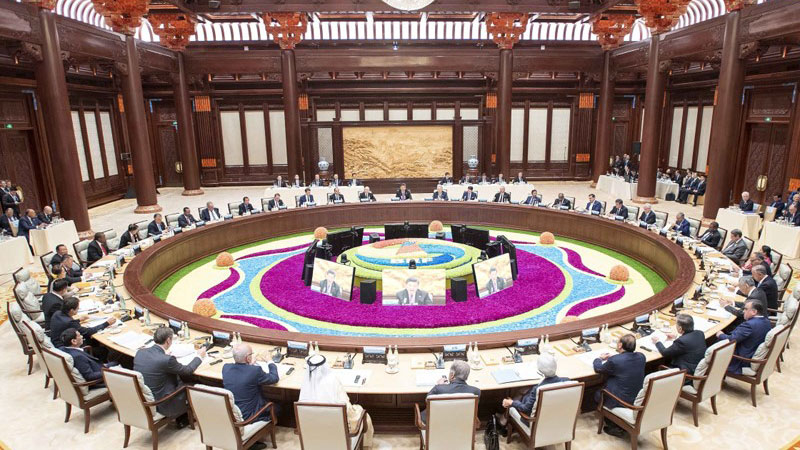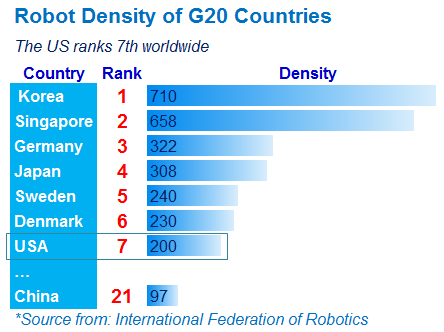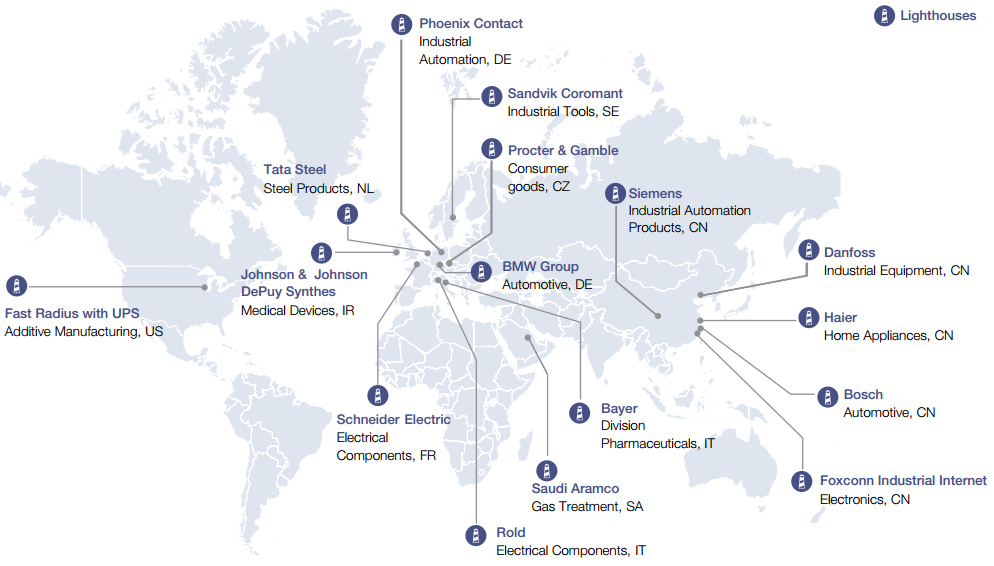
Opinion
10:04, 16-May-2019
Intelligent 'Belt' manufactures win-win development 'Road'
By Belunn Se

Editor's note: Belunn Se is an industry observer based in Shenzhen, China. The article reflects the author's opinion, and not necessarily the views of CGTN.
At the second Belt and Road Forum for International Cooperation in April, Chinese President Xi Jinping called for deepening synergy in frontier fields such as intelligent manufacturing and digital economy.
He hoped that more countries and enterprises would participate in the promotion of intelligent manufacturing in China, share the opportunities of high-quality development of Chinese manufacturing industry and write a new chapter of global development of intelligent manufacturing together.
During the past few years, Chinese manufacturing industry has been making continuous progress.

China ranks 21st worldwide in robot density.
China ranks 21st worldwide in robot density.
As a critical indicator of automation level in the manufacturing industry, the yearly installation of robots in China increased 194 percent between 2015 and 2018, from 68,600 to 133,200, accounting for 36 percent of the global 384,000 shipments. China has remained the world's largest robot market since 2013.
Meanwhile, it still has a lot of growth potential from the perspective of "robot density" (robots installed per 10,000 manufacturing employees), which in China is just less than half that of the U.S., according to the latest report issued by the International Federation of Robotics (IFR) on April 3 this year.

World Economic Forum: "Global network of lighthouse factories".
World Economic Forum: "Global network of lighthouse factories".
In January, the "World Economic Forum" identified 16 "manufacturing lighthouses" – production sites that are world leaders in the successful adoption and integration of cutting-edge technologies of the Fourth Industrial Revolution. Five of them are located in China and operated by global enterprises. Besides Haier and Foxconn from the Chinese mainland and Taiwan respectively, three were built by foreign-invested enterprises – Siemens and Bosch from Germany and Danfoss from Denmark.
Intelligent manufacturing policies: Different paths, same destination
On February 5, 2019, the German Federal Ministry for Economic Affairs and Energy officially issued the "Nationale Industrie strategie 2030," aiming at supporting key industrial fields, increasing industrial output value and ensuring the competitiveness of German industry in Europe and even the world.
The strategy lists 10 "key industrial sectors" such as steel, copper and aluminum, chemical industry, machinery, automobile, optics, medical equipment, green technology, national defense, aerospace and 3D printing.
The German government will continue to support these sectors, provide cheaper energy and more competitive tax policies for relevant enterprises, relax monopoly laws and allow the formation of "national champions" or even "European champions" enterprises to enhance the global competitiveness of German industry.
According to the strategy, Germany plans to increase industrial output to 25 percent of GDP by 2030.
Two days later, on February 7, the White House published on its website a series of technology policies and strategies under the title "America Will Dominate the Industries of the Future" to ensure America has a leading role in the four emerging areas, namely AI, 5G, Quantum Information Science (QIS) and advanced manufacturing.
Since his inauguration, President Donald Trump has focused on the above-mentioned four key technologies that promise to fuel American prosperity far into the future, including new manufacturing technologies driving American competitiveness and enabling the economy to continuously improve by increasing productivity, producing technologically superior products, and forming entirely new industries.
Comparing the development strategies of Germany and America, the implementation methods are different, but the targeted orientation is basically the same. The fundamental appeal is to try to advance efficiency, increase benefit and obtain competition advantage of manufacturing industry by a large margin.
Intelligent 'Belt' manufacturing
At present, the rapid iteration of emerging technologies such as AI, 5G and industrial Internet has been injecting new innovation momentum into intelligent manufacturing.
I believe that the further deepening of open collaboration between countries and international enterprises will further accelerate and expand the development for intelligent manufacturing as well.
(Top photo: Chinese President Xi Jinping delivers the opening speech at the round table summit of the second Belt and Road Forum for International Cooperation, April 27, 2019. /Xinhua Photo)

SITEMAP
Copyright © 2018 CGTN. Beijing ICP prepared NO.16065310-3
Copyright © 2018 CGTN. Beijing ICP prepared NO.16065310-3